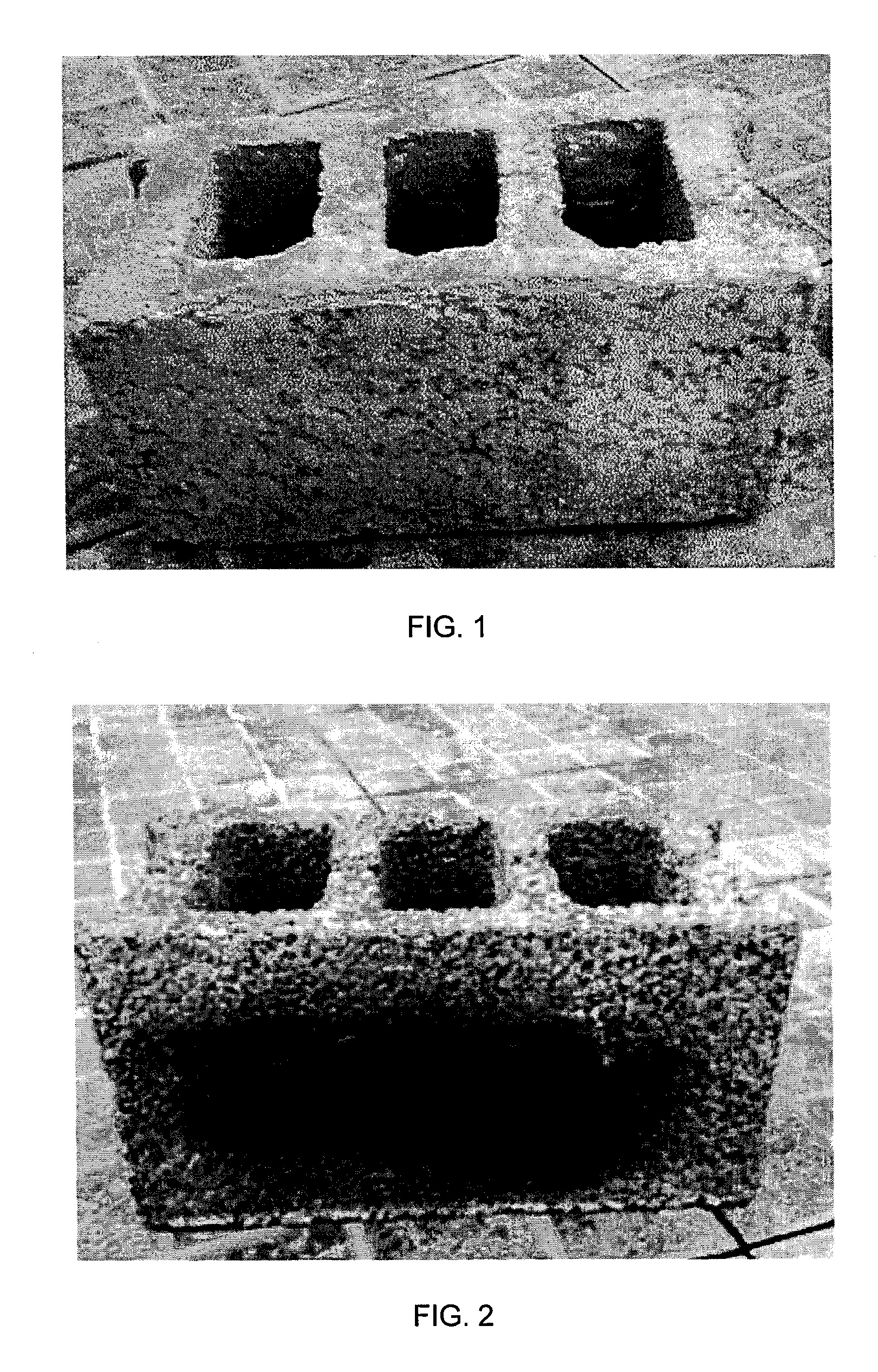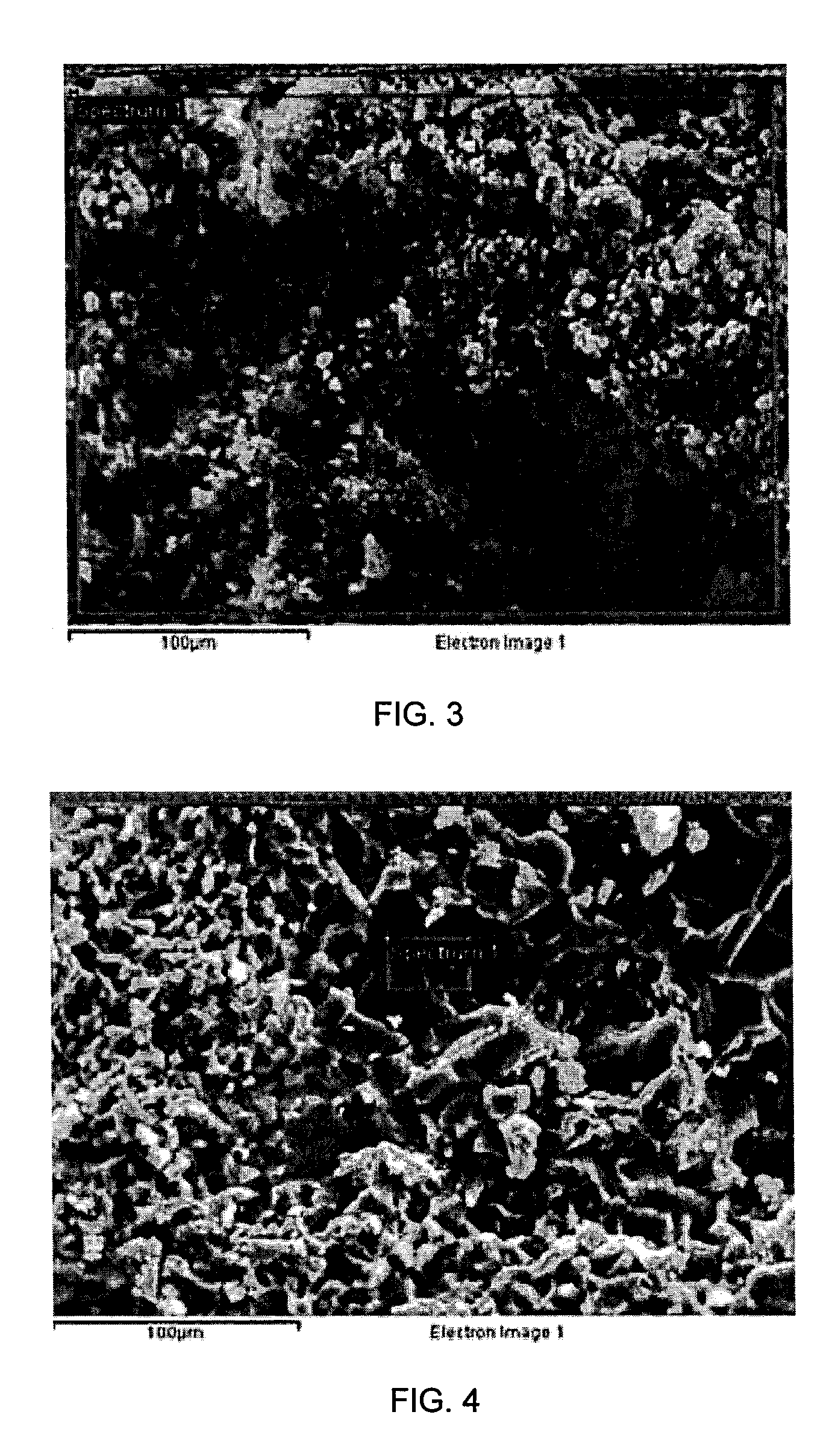Waste crumb-rubber augmented masonry blocks
- Summary
- Abstract
- Description
- Claims
- Application Information
AI Technical Summary
Benefits of technology
Problems solved by technology
Method used
Image
Examples
Embodiment Construction
[0031]Referring now to the drawings, wherein like reference numerals designate identical or corresponding parts throughout the several views.
[0032]One embodiment of the disclosure describes Crumb Rubber (CR) augmented Masonry Blocks. In one embodiment, crumb rubber is obtained from scrap tires after being processed. The crumb rubber is then mixed in specified percentages with concrete particles, cement and water. The conventional processing of Masonry blocks includes mixing concrete, cement water and 15% of sand. The sand is typically about 10-20% of the masonry block. Preferably, about 15% of the conventional masonry block is sand. Sand is a naturally occurring granular material composed of finely divided rock and mineral particles. The composition of sand may vary depending on the local rock sources and conditions, but the most common constituent of sand in inland settings includes SiO2 in the form of quartz. Sand is in particulate form, e.g., grains having a diameter of from 0.06...
PUM
| Property | Measurement | Unit |
|---|---|---|
| Weight | aaaaa | aaaaa |
| Fraction | aaaaa | aaaaa |
| Fraction | aaaaa | aaaaa |
Abstract
Description
Claims
Application Information
 Login to view more
Login to view more - R&D Engineer
- R&D Manager
- IP Professional
- Industry Leading Data Capabilities
- Powerful AI technology
- Patent DNA Extraction
Browse by: Latest US Patents, China's latest patents, Technical Efficacy Thesaurus, Application Domain, Technology Topic.
© 2024 PatSnap. All rights reserved.Legal|Privacy policy|Modern Slavery Act Transparency Statement|Sitemap


